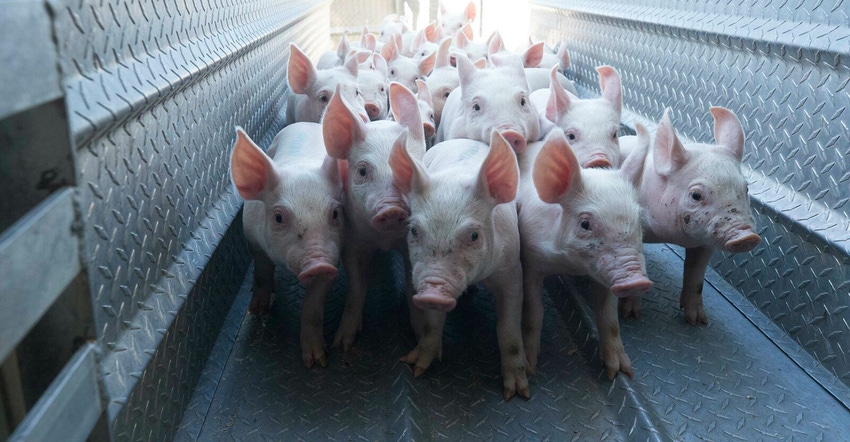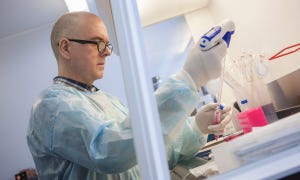Is a national Swine Health Improvement Plan needed?
Feedback from producers and swine industry stakeholders is requested to determine if a program similar to the National Poultry Improvement Plan needs adoption.
August 30, 2019

Is it time for the U.S. pork industry to adopt a program similar to the National Poultry Improvement Plan?
Earlier this year, a team from Iowa State University concluded a study that was commissioned in 2018 with the aim of seeking a more in-depth understanding of the NPIP and assessing the potential for an NPIP-like program to support the U.S. pork industry.
The NPIP is a unique industry, state and federal partnership that has long served to safeguard, improve and assure the health of U.S. poultry and enhance the competitiveness of the U.S. poultry and egg industries in the domestic and global marketplace. Participation in NPIP is voluntary and almost universal among commercial poultry and egg operations throughout the United States.
Participants utilize the NPIP to certify the health status of U.S. poultry and egg flocks, hatcheries, slaughter plants, products and states in accordance with NPIP’s officially recognized standards and definitions. NPIP’s health status certifications are used to demonstrate evidence of freedom of both trade and non-trade impacting diseases of poultry. NPIP is a working and active system of animal health control whose programs content and direction are informed and updated every two years by a formal congress of industry stakeholders and subject matter experts. NPIP’s program definitions, standards, and health status classifications are broadly recognized across all 50 states and by international trading partners.
While participation in NPIP is voluntary, specified NPIP health status certifications are commonly required at points of sale, exhibition and for interstate and international commerce. NPIP’s avian influenza virus surveillance programs and health status certifications held by meat-type chicken and turkey slaughter plants, commercial table egg laying operations and states have played a primary role in helping sustain export markets and interstate commerce from unaffected regions during times of an AIV outbreak of significance affecting U.S. commercial poultry operations.
The landscape of the U.S. swine industry has changed with globalization, multi-site production and a greater dependence of exports, and the effect these facets have on swine health and the impact of disease incursion on the industry.
In particular, trade-impacting disease risks and recurring endemic diseases of high consequence are substantial challenges. Scalable solutions to these major and well-recognized challenges are largely beyond the immediate control or influence of any individual producer, packer, state or existing entity. Next generation animal health assurance and area regional disease control solutions are needed to secure the future of the highly mobile and export-centric U.S. pork industry. Experience affirms that solutions offered by government or industry, each acting independently, will not be timely, capable or robust enough to keep pace with industry needs. State and federal animal health agencies lack the resources, capacity and industry-specific know-how, while industry-only solutions lack the coordination and authority to establish official standards and health status certifications across legally recognized areas, states, regions or by well-defined segments of the commercial pork industry.
The NPIP’s unique industry, state and federal partnership provides a platform wherein industry stakeholders play a direct and on-going role in establishing poultry health standards, definitions and policies across the U.S. poultry and egg industries.
The basic tenets and approach used by the NPIP could serve as a road map for pork producers and packers (slaughter facilities) interested in more directly and systematically addressing the major swine health issues of high consequence and better positioning the future of the U.S. pork industry in the domestic and global marketplace.
The ISU team of Rodger Main, Pamela Zaabel, Kerry Leedom-Larson, James Roth and Jeffrey Zimmerman want to hear what producers and allied industry members think of the potential of adopting an NPIP-like program for the swine industry.
Click here for more information on the potential Swine Health Improvement Plan. This website provides interested stakeholders:
Download a one-page Industry Summary
Download a pdf copy of Case Study Report
Read an electronic book version of Case Study Report
View narrated PowerPoint version of the Case Study Report
Order a bound copy of Case Study Report
Participate in an online (six-question) survey as means of providing feedback
Source: Iowa State University, which is solely responsible for the information provided, and wholly owns the information. Informa Business Media and all its subsidiaries are not responsible for any of the content contained in this information asset.
You May Also Like



